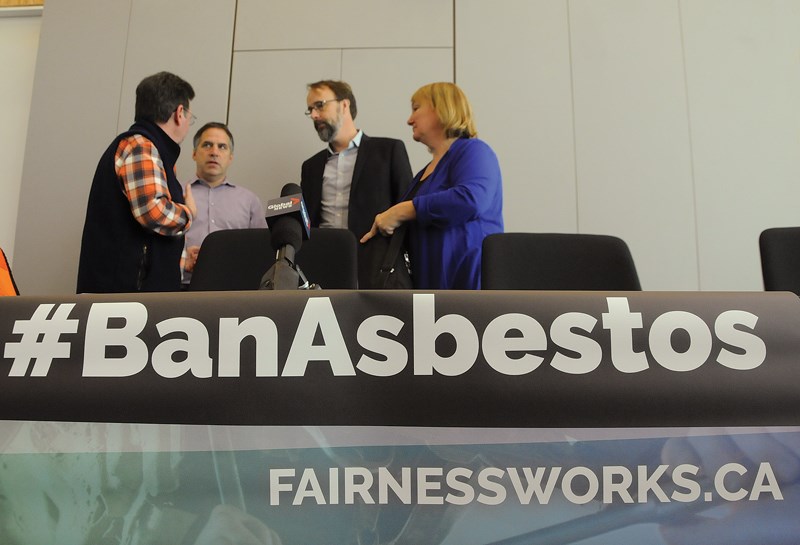Too often fielding calls from colleagues who have contracted asbestos-related cancer, Lee Loftus is never sure what to tell fellow insulation workers who have been diagnosed with mesothelioma.
“Generally it’s not diagnosed until it’s late – Stage 3 or 4,” said Loftus, president of the BC Building Trades Council. “When I get those phone calls, on average, people die three to four months later. It’s very quick, very painful and it’s like being strangled to death.
“Those are the hard days, when you try to counsel someone asking how bad the last days before death are going to be. I don’t know how to answer that question anymore.”
More than 2,000 Canadians die each year as the result of exposure to asbestos, the leading cause of workplace-related deaths nationwide. That’s why North Vancouver’s city council has thrown its support behind a comprehensive ban of asbestos, and it appears that wish could be granted in short order.
Council unanimously supported a motion put forward by Coun. Craig Keating to support the Canadian Labour Congress’s longstanding call for an asbestos ban during Monday night’s meeting, mere days after reports indicated the federal government will announce its plans to prohibit the substance this week.
Although asbestos mining in Canada ceased five years ago, exports of products containing the hazardous material have been on the rise, ballooning from $4.7 million in 2011 to $8.2 million last year.
But a ban on importation and use won’t diminish the risk from asbestos products already utilized in Canadian buildings or the health impacts of people already suffering from asbestos exposure.
So the CLC’s recommended approach, now backed by the city, includes changes to regulatory standards for asbestos disposal, an update of Canada’s Workplace Hazardous Materials Information System to warn workers to the presence of asbestos, a national registry of public buildings containing the substance and a health-response plan for asbestos-related illness.
“We have become a growing city, a city with new infrastructure projects and new buildings. What we know right now is that asbestos products are coming into Canada, imports are growing and that asbestos is showing up in things that are going into buildings that are being constructed here,” Keating said when announcing details of his motion on Dec. 7.
“We don’t have the capacity to ensure that either the public safety or worker safety is being addressed.
“What we’re asking the Government of Canada to do is something that 56 other countries have already done, so this is not a stretch.”
Loftus, who is also the business manager of the BC Insulators union, spent 15 years working directly with asbestos in the 1970s and ‘80s. He’s a third-generation asbestos worker who remembers his father coming home with the substance in his hair. Loftus now suffers from asbestosis.
“The evidence in North America and throughout the world is that there is no safe exposure to asbestos. It just takes one exposure, one time, in one situation that could result in an asbestos cancer or fibrous disease,” said Loftus, noting that it could take decades for the effects to materialize.
“Twenty-five or 30 years later, you find you can’t walk up hills, you can’t climb two flights of stairs, you can no longer run around the soccer field with your kids.”
Loftus detailed how the indestructible asbestos fibres leave behind scar tissue as they travel deeper and deeper into the lungs as time passes.
“We need to reach out and license contractors that are doing abatement projects, demolitions of houses … renovations and alterations,” he said. “Those are the exposures of today.”
Joey Hartman, Vancouver & District Labour Council president, noted Canada contributes to asbestos exposure in other, developing nations by importing products containing the material as well. Friction products, such as brake pads, and pipe fittings are among the most commonly imported products still containing asbestos.
“In a lot of ways this has been somewhat of a silent killer that has not had the attention it requires, so we’ve worked very hard to bring it to light,” said Hartman.
Hartman said she’s encouraged by indications that a ban is coming but she’s hopeful that the federal government’s approach will be as detailed as what the CLC has been campaigning for.



